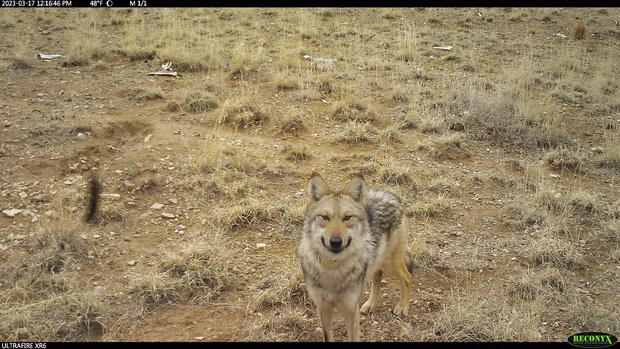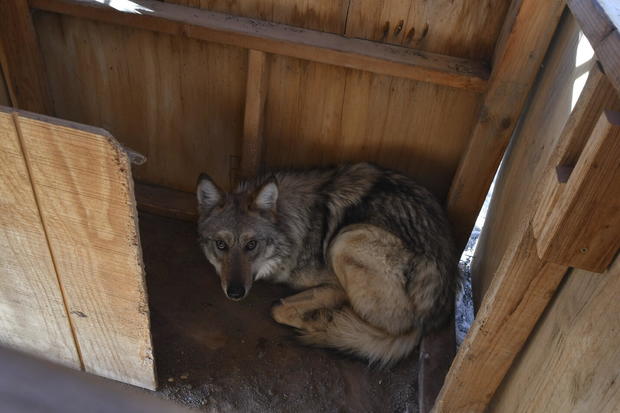U.S. wildlife managers play matchmaker after endangered female wolf captured
A match made in the wilds of New Mexico?
An endangered Mexican wolf captured last weekend after wandering hundreds of miles from Arizona to New Mexico is now being readied for a dating game of sorts as part of federal reintroduction efforts.
But only time will tell whether the U.S. Fish and Wildlife Service can succeed in finding a suitable mate for the female wolf numbered F2754, also known as Asha, according to a news release by the agency. The newly captured wolf will be offered a choice among two brothers also housed at the federal government's wolf management facility in central New Mexico.
"We wanted to bring her in earlier so that she has a longer chance to bond with a mate and then hopefully successfully breed," said agency spokeswoman Aislinn Maestas. "We're going to be observing her and waiting to see. Hopefully, she does show interest in one or the other."
It could be late February or early March before biologists know if their efforts are successful.
It has been 25 years since Mexican gray wolves were first reintroduced into the Southwestern
U.S. CBS News previously reported that the wolves, also known as lobos, were once plentiful in the area but were hunted nearly to extinction. In the mid-1970s, just seven such wolves remained in existence.
There are now about 250 in the wild, thanks to efforts like captive breeding and targeted releases, marking the most Mexican gray wolves documented in New Mexico and Arizona since the program began. These efforts have built up the population, but Mexican gray wolves remain the rarest subspecies of gray wolf in North America, and a lack of genetic diversity makes rehoming pups from captivity necessary.
Federal and state wildlife managers had been tracking the lone female wolf for months after she left the wolf management facility in late October 2023. After traveling between the preserve and the San Pedro Mountains, officials decided to capture her before the start of the breeding season, a decision that program coordinator Brady McGee said was "made out of concern for her safety and well-being."
"Dispersal events like this are often in search of a mate. As there are no other known wolves in the area, she was unlikely to be successful, and risked being mistaken for a coyote and shot," said McGee. "By pairing her with a carefully selected mate in captivity, we are hoping she will breed and have pups this spring. The best outcome for her is to be released back into the wild, where she and her offspring can contribute to Mexican wolf recovery."
The opportunity to capture Asha came Saturday, near the rural community of Coyote, New Mexico. A helicopter crew working with the New Mexico Game and Fish Department shot her with a tranquilizer dart and then readied her for the trip south to the Sevilleta Wolf Management Facility.
Environmentalists had pushed federal managers to let the solo female wolf be, pointing out that previous efforts to relocate her were unsuccessful following her first attempt to head northward last winter. They also pointed out that the wolf's movements were evidence that the recovery boundaries are insufficient to meet the needs of the expanding population.
"I think what we can say is that we know wolves are driven towards dispersing as a way towards mating with non-related wolves. In the case of Mexican wolves, those unrelated mates are increasingly hard to come by because of the level of inbreeding in the population and the narrow band of Arizona and New Mexico where wolves are allowed to be," said Greta Anderson, deputy director of the Western Watersheds Project.
Ranchers in New Mexico and Arizona have long complained that wolves are responsible for dozens of livestock deaths every year and remain concerned about any expansion of the wolves' range. Rural residents in Colorado are joining them as officials plan to release gray wolves there in the coming weeks.





